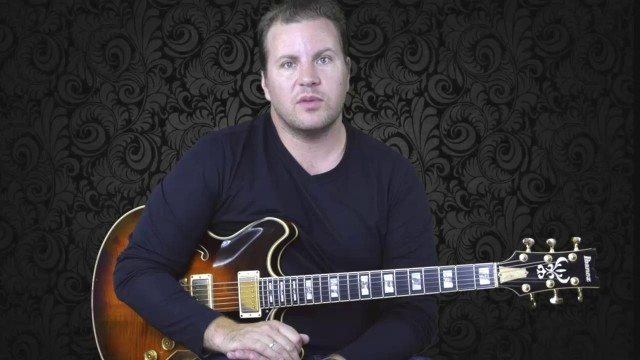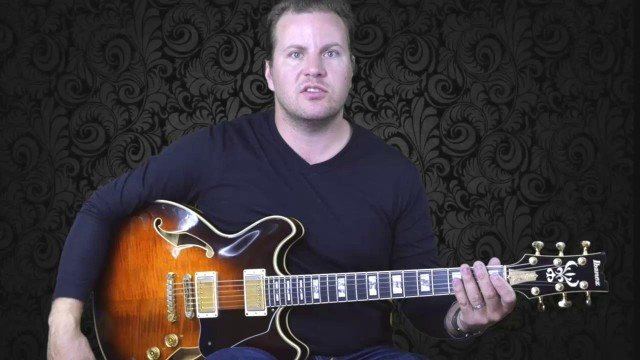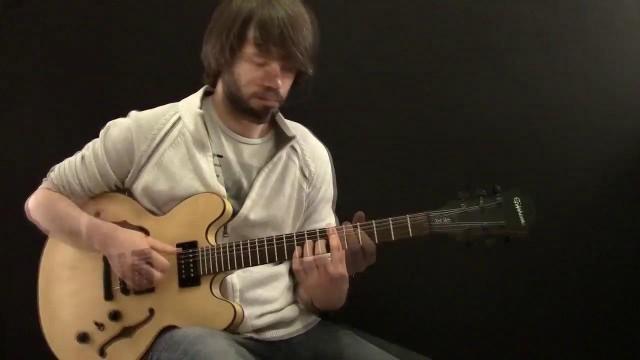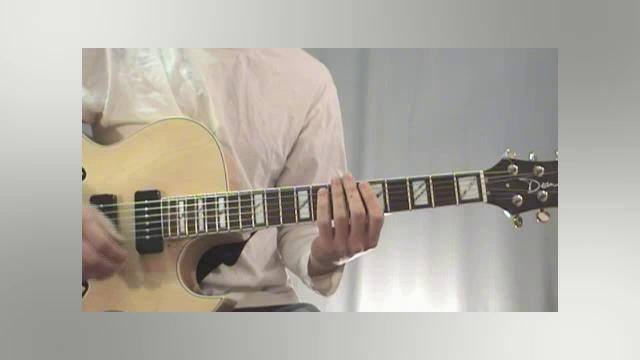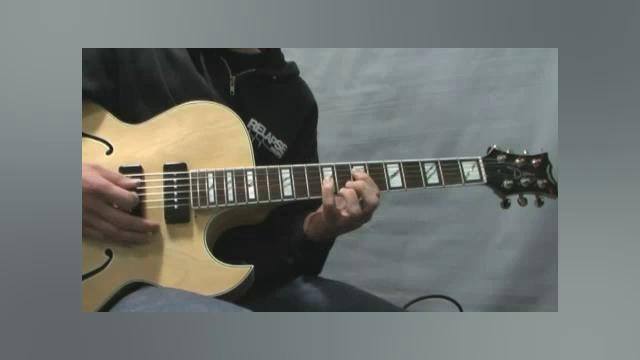Now we are going to experiment with turning some minor chords into Dominant Chords.
Dominant chords generally resolve down to a Perfect 5th. You can see an example of this in our progression via the G7 > Cmaj7 movement.
Typically in pop and rock styles of music you will only ever see a Dominant 7 chord resolving to a Major chord.
In jazz though, it is quite common to use Dominant 7 chords and resolve to chords other than the Tonic.
In this lesson we will be substituting Dm7 for a D7. The main reason this sound works is that D7 is chord 5 in the key of G. Since we are resolving to a G chord it retains much of the function that it would if we were playing in the key of G.
The only difference is that D7 would normally resolve to Gmaj7, but today we are resolving D7 to a G7. This is a trademark chord movement commonly found in Jazz and Blues styles.
It may sound a bit odd to some people but if you listen to a bit of Jazz or Blues you will quickly begin to recognize this as one of the key factors that distinguish the Jazz/Blues language.
Anyway, there is no need to ramble on too much here. All we need to do is take the 3rd (which is a minor 3rd 'F') and raise it by one semi tone, making the 3rd of this chord an F#.
If you did not already know, we build Dominant7 chords by stacking a 'Major 3rd' - 'Perfect 5th' and 'minor 7' on the Root of the chord.
Also represented like this - R 3 5 b7
In contrast, the formula for a minor chord is - R b3 5 b7
In the video I have given you a demonstration of this chord sequence when we swap Dm7 with a D7.
Have a go at playing and listening to this new sequence.
Homework: See if you can turn Am7 (chord 6) into an A7. If you're still unsure how to do this, write out the notes of the Am7 chord, identify the 3rd and raise it by a semitone. Although I could do it for you, it will be to your benefit to begin thinking about chords and the notes within them.
Should you find yourself unable to do this, don't stress. The answers you seek will be available in the next lesson.










